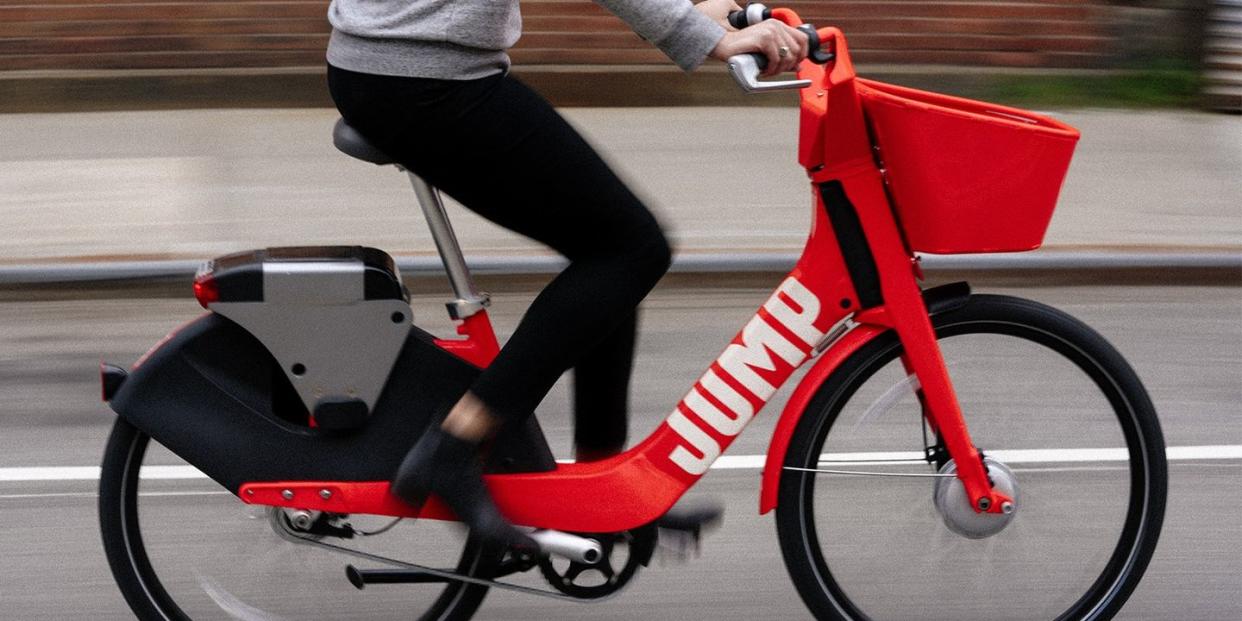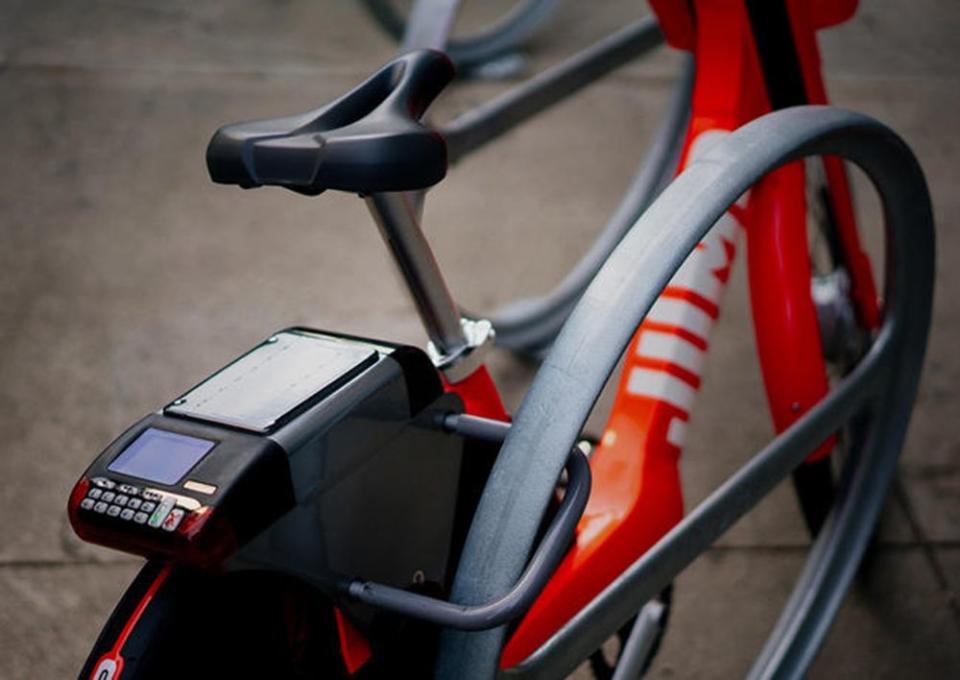Uber Gets Into Bike Share With Acquisition of Jump

The biggest news in both the cycling and tech worlds this week was that Uber, the ride-hailing app, will officially get into the bike-share business. The company announced on Monday that it plans to buy Jump, a Brooklyn-based bike-share service with a growing business in dockless e-bikes. The deal follows a two-month pilot project that gave Uber users access to 250 of Jump’s pedal-assisted electric bikes in San Francisco.
Within the past year, privately owned dockless bike-share companies have cropped up in cities across the US, rolling out thousands of rentable bikes on the streets and competing with conventional, dock-based public programs. They tend to function like Silicon Valley start-ups, scaling rapidly with the support of venture capital and leaving local regulators scrambling to catch up.
Now, one of these dockless operators is partnering with the biggest and perhaps most controversial player in ride-sharing. What does this mean for cyclists who like to rent their wheels? Uber is anything but predictable, but its resources, reach, and recent commitment to non-automotive transportation could mean a future where bike share becomes as popular as… well, Uber.
Jump didn’t begin as a dockless e-bike service. CEO Ryan Rzepecki launched the company under the name Social Bicycles back in 2010. One of the early start-ups in the field, Jump provided smart bike and docking station technology to cities ranging from Portland, Oregon, to Krakow, Poland, for use in their conventional bike-share systems.
In 2017, the company shifted focus and rolled out its own dockless e-bikes in San Francisco. A number of competitors operated in the city at the time, but Jump was the first to get official permission as well as the first to offer bikes with electric pedal assists. The company expanded its dockless fleet to Washington, DC, last fall and has plans to open in Sacramento, California, and Providence, Rhode Island, this year.

Rzepecki told TechCrunch the decision to sell came down to Uber’s ability to help the dockless model scale. He also noted that recent leadership changes at Uber made him comfortable going through with the deal. (Though the sale’s official price tag remains undisclosed, TechCrunch reported that it was somewhere in the neighborhood of $200 million.)
Travis Kalanick, Uber’s founder and former CEO, resigned last summer amid a string of controversies and bad press. Its new CEO, Dara Khosrowshahi, made the curious announcement in February that he wants the company to expand its focus beyond cars to include both cycling and public transportation.
The Jump purchase is the first major step in this new direction. In a recent blog post on the acquisition, Khosrowshahi wrote that he wants to bring “together multiple modes of transportation within the Uber app-so that you can choose the fastest or most affordable way to get where you’re going, whether that’s in an Uber, on a bike, on the subway, or more.”
But like its early days wading into the taxi market, Uber is entering a crowded field. Many ride-sharing companies are also looking beyond the automobile to other transportation modes. Scoot, a light-electric vehicle service, introduced e-bikes into its fleet earlier this year. Uber’s largest competitor, Lyft, partnered with Baltimore Bike Share in February to designate five of its docking stations as special pick-up zones. Travis VanderZanden, a former Uber and Lyft executive, launched an electric-scooter sharing app called Bird last fall.

“We’re seeing a lot of diversification in the shared mobility space,” said Samantha Herr, executive director of the North American Bikeshare Association, a trade group for bike-share companies. “It’s a trend we’re watching and interested to see how it impacts the industry.”
Herr said dockless services can coexist with existing bike-share networks. She pointed to DC, which hosts both a conventional system (the enormously popular Capital Bikeshare) and as many as five different dockless services, including Jump. In other cities, such as Seattle, dockless companies swooped in when conventional systems failed.
But competition has been more fierce abroad, especially in China, where upstart companies have flooded the market and littered the streets with unused bikes. Some dockless start-ups, such as the Chinese company Bluegogo, have already gone bust.
Uber and Jump did not respond to multiple requests for comment, but many questions remain. Where will Uber focus its expansion? And will the company take the same bullish approach to bike share as it did to ride hailing?
('You Might Also Like',)

